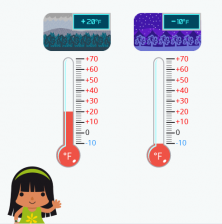We will continue talking about Craig Barton’s book, How I Wish I’d Taught Maths, in this post. As you know, the book is about evidence-based education and today we will discuss the chapter about learning with analogies.
Here are some previous posts we have written about the book:
Are analogies good for learning?
A well thought out analogy helps students connect new information with concepts and skills that they already have.
However, learning by analogies is no magic trick – it is necessary to have the knowledge to transfer. In other words, there has to be sufficient work in the source domain (the specific model).
Familiarity and Visibility
Willingham (2009) identified a necessary condition for the success of learning with analogies: the students should be familiar with the specific model and should have the opportunity to experiment with it.
If the students are not familiar with the analogy or they cannot experiment, they will need to depend largely on their cognitive resources to understand the model. Furthermore, when visual materials are missing, producing a relational comparison is very difficult.
In any case, William (1997), concludes that the familiarity and ability to experiment with the model are not enough to know whether learning by analogies is the most suitable for teaching, so two other important criteria are introduced.
Match
The successful transfer of knowledge through learning by analogies depends on the structural similarity between the source domain and the objective domain.
However, the source domain may undergo quite a few changes in an effort to simplify it, running the risk of no longer resembling its original form which can lead to incorrect inferences.
Range
What is the range of application of the analogy? How long can we help our students understand a particular concept?
We are going to look at an example with whole numbers. Many teachers use the analogy of apples and oranges to explain equations like 3a + 2b. You cannot add apples and oranges. Yet this analogy is rendered useless with expressions like 3a x 2b, which in fact can be combined.
The thermometer is another analogy that we usually use with whole numbers. But do kids today really know what a thermometer is when they can just check the temperature on their smartphone?

Can we use the thermometer to help students understand all the skills related to whole numbers?
- It is perfect to order negative temperatures: the temperature in Boston is 20ºF and in Aspen, it is -10ºF. Which city is colder?
- It is also good for adding and subtracting positive numbers: yesterday the temperature in Vail was -2ºF, today it dropped by 5ºF, what is the temperature in Vail today?
- However, for adding and subtracting negative numbers it is no longer appropriate and appears forced.
A valid option to represent this type of operation is the load model. Yet this model doesn’t help us with the multiplication and division of whole numbers.

At this point, we have no choice but to abandon the load model and use the distributive property as our approach. The basic idea behind this justification is to use the repeated addition model to explain the negative product by positive when the negative is multiplying.

After, we can deduce that with the distributive property, a positive multiplied by a negative is negative.

At Smartick we use analogies in a very cautious way, following curriculum guidelines and, of course, trying not to force the analogy beyond its limits.
References:
- Willinghamm D. T. (2009) ‘Is it true that some people just can’t do math?’ American Educator 33 (4) pp. 14-19.
- William, D. (1997) ‘Relevance as MacGuffin in mathematics education’, British Educational Research Association Conference, York, September 1997.
Learn More:
- Learning the Temperature Scales: Degrees Celsius or Fahrenheit?
- What Do Double and Half Mean?
- Learn the Signs of the Power: Positive or Negative
- How to Subtract Polynomials with Help from Algebra Tiles
- The Importance of Positive Reinforcement in Education







